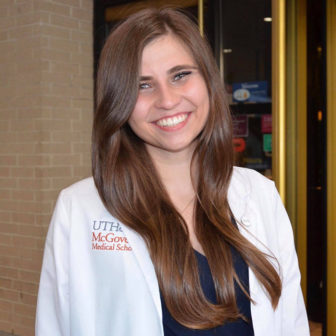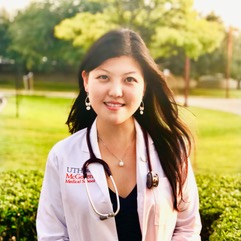
Novoselov/Shutterstock
.
On Oct. 1, 2017, a 64-year-old man brought 14 AR-15 rifles, eight AR-10 rifles, a bolt-action rifle and a revolver with more than 5,000 rounds to the 32nd floor of the Las Vegas Mandalay Bay Hotel, broke his window and fired more than 1,000 rounds at civilians at the Route 91 Harvest Music Festival, killing 58 and wounding 422. Despite being the deadliest mass shooting in U.S. history, it and the recent tragedies in El Paso, Texas, and Dayton, Ohio, still only account for a small fraction of the approximately 40,000 Americans who die and countless others who are injured by guns annually.

Natasha Topolski
On the night of June 21, 2019, a father was spending his evening assembling a gate to protect his young children from falling on the staircase. He had tucked them into bed and assumed they were sound asleep. However, his 3-year-old son, Radyn, had woken up and wandered into another room where he found his family’s gun on a tall shelf and accidentally shot himself in the eye. The child was airlifted to Children’s Memorial Hermann Hospital in Houston for treatment but ultimately would not survive.
Stories like Radyn’s are not uncommon. Radyn was one of at least 54 children to die by an accidental shooting and 2,212 shot in 2019 so far.
Medical students at McGovern Medical School at The University of Texas Health Science Center at Houston (UTHealth) have had enough. We believe gun violence needs to be addressed by the medical community and started an elective course on the physician’s role in preventing gun violence.
Gun-related deaths are consistently ranked as a leading cause of mortality in the United States, and treatment of gun-related injuries in the ER and inpatient facilities alone contributes to an annual financial burden of approximately $2.8 billion. Estimates of the total annual cost when accounting for associated costs such as follow-up health care, lost work, and criminal justice claims are upwards of $200 billion.

Ning Zhao
Given this, gun violence can easily be classified as a public health issue. As our knowledge of the causes of medical conditions has improved, the practice of medicine has shifted to emphasize preventative medicine. It is now well-established that diet and exercise help prevent the development of diabetes and heart failure and that smoking is associated with lung cancer. Subsequently, it is now standard practice for physicians to regularly screen and counsel patients on healthy practices. Given the significant health risks gun exposure poses, physicians need to treat gun violence like any other leading cause of mortality by working to prevent it.
Statistics
Generally preventative medicine initiatives are developed through rigorous evidence-based research. However, there is a glaring dearth in gun violence research, due largely to the Dickey Amendment. Legislated in 1996, the law prevents the Centers for Disease Control from using federal funds to advocate for or promote gun control. Therefore, our knowledge of the issue is limited.
In 2017, there were 14,383 deaths (4.43 per 100,000 people) due to interpersonal gun violence in the U.S., ranking us 28th in the world and the leader among industrialized nations. There were approximately 24,974 deaths due to self-harm by firearm (7.69 per 100,000 people), which was significantly higher than any other country. An estimated 1,300 children die and 5,790 are treated after gunshot wounds annually. More than half of gun owners admit to not storing their gun safely, including 45% of gun owners living with children. Approximately 1 out of 3 homes with children have guns, and 4.6 million children live with unlocked, loaded guns. As of June 30, 54 people have died and 96 have been injured as a result of 144 accidental shootings by children this year.
Calls to collect more data and implement changes to reduce gun violence have increased dramatically and led to successes, including the 2018 ruling that the Dickey Amendment language does not prohibit research on the causes of gun violence. This is an area where we believe physicians can play a meaningful role due to their unique and direct involvement in the care of victims, and perhaps more importantly, their relationship with at-risk patients. We hypothesize that regular screening of patient access to guns, perception of guns and knowledge of gun safety can help identify people at risk for gun violence.
Historically, medical schools have offered limited educational content on the physician’s role in preventing gun violence. In fact, as of 2016, a comprehensive review determined that only four programs met inclusion criteria for including formal teaching on firearm safety. Consequently, many physicians are not comfortable discussing guns with patients or simply do not think that gun violence is related to health. Without training, physicians will remain on the sidelines of this crisis.
More than a discussion
In an effort to fill this gap, McGovern Medical School’s elective course, “Gun Violence and Physicians: What You Need to Know,” was born in the spring of 2018. As one of the first medical school courses examining gun violence in the nation, the initiative has gained momentum after completing its second year and received overwhelmingly positive feedback from medical students, faculty and health professional students from UTHealth and Baylor College of Medicine.
The lecture series includes speakers from across the Texas Medical Center and covers topics including the physical response to and treatments for bullet wounds, how to assess whether there is a risk of violence to a patient, characteristics seen in those who commit gun violence, how to integrate conversations about gun ownership and safe storage into routine history and physical exam appointments with case simulations, and how to stay informed and involved. Above all, the course strives to foster an environment where health care professionals can learn and freely engage in dialogue about factors contributing to gun violence and patient well-being in a respectful, fact-based, unbiased and nonpolitical way.
It is important to realize that this is more than a discussion. Every day more than 100 lives are taken by gun violence in the U.S. It is past time to take action; physicians and other health care professionals must empower themselves to develop the courage and tools to talk about this controversial topic with patients, present factual information on safe gun keeping and provide professional guidance to address the public health epidemic of gun violence. To do so, we need to support more funding opportunities for evidence-based research, educate physicians and spread awareness about how we can protect our patients from firearm-related injuries.
All licensed physicians swear an oath to uphold the principles of the Physician Charter, in which physicians commit to improve quality of care by increasing patient safety, minimize overuse of health care resources and optimize the outcomes of care, as well as a duty to uphold scientific standards by promoting research and supporting the discovery of new information. To protect our patients, we have an obligation that extends beyond treating gunshot victims. We must strive to treat the underlying problem by establishing our roles in gun violence prevention.
We hope our initiative at McGovern Medical School will cause a ripple effect and encourage other institutions to take action. By being a part of the conversation, you are a part of the solution. Young professionals often have grand ideas of how they want to contribute to society and solve social issues plaguing our world.
However, many feel powerless or not experienced enough and put off taking action until they have “established a footing” in their career. But in order to establish a “footing,” you have to take the first step. Things are happening now and you can make a difference now. Every voice matters, and we hope that you will join the conversation. Significant progress will require a multidisciplinary approach and isn’t a small undertaking.
If you are not a health care professional, you can still be part of the solution by learning about and implementing gun safety measures in your home, participating in dialogue about current issues related to gun violence and supporting the causes related to gun violence prevention.
This issue is bigger than the mass shootings that make the headlines. Gun-related deaths and injuries happen daily due to interpersonal violence, suicide attempts and accidents and we hope to help combat this issue from a new lens.
Natasha Topolski is a second-year M.D.-Ph.D. student and co-course coordinator of the “Gun Violence and Physicians: What You Need to Know” elective at McGovern Medical School at The University of Texas Health Science Center at Houston. Before starting medical school, she graduated from Tulane University with a double major in neuroscience and cell & molecular biology and minor in philosophy and spent two years as a post-baccalaureate Intramural Research Training Award at the National Institute of Mental Health.
Ning Zhao is a second-year student and co-course coordinator of the “Gun Violence and Physicians: What You Need to Know” elective at McGovern Medical School at The University of Texas Health Science Center at Houston. She graduated from Duke University with a B.S. in biology and B.A. in global health, with a minor in Asian & Middle Eastern studies.































